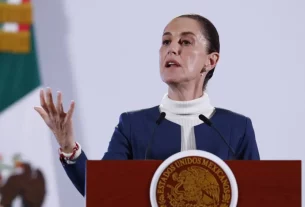According to a recent report by MSCI, European sustainability funds have reached a remarkable €8 trillion in assets under management, largely driven by the implementation of the Sustainable Finance Disclosure Regulation (SFDR) Article 8 and 9 rules. This surge highlights a growing commitment among investors to integrate environmental, social, and governance (ESG) factors into their investment decisions.
Understanding SFDR and Its Impact
The SFDR, which came into effect in March 2021, aims to enhance transparency in the financial services sector regarding sustainability. Article 8 and Article 9 of the regulation classify funds based on their sustainability goals:
- Article 8 Funds: These are classified as “light green” funds that promote environmental or social characteristics but do not necessarily have sustainable investment as their primary objective.
- Article 9 Funds: Known as “dark green,” these funds have sustainable investment as their primary objective, focusing explicitly on achieving positive environmental or social outcomes.
This regulatory framework encourages asset managers to disclose more information about how they incorporate sustainability into their investment strategies, prompting a significant shift in capital flows towards sustainable investments.
Key Findings from the MSCI Report
- Massive Growth in Assets: The report indicates that the assets managed under Article 8 and 9 categories have seen exponential growth, rising from approximately €2 trillion in 2020 to €8 trillion in 2024. This trend reflects a robust demand for sustainable investment products.
- Diverse Investment Strategies: The growth is not confined to specific sectors; it encompasses a wide range of industries, including renewable energy, sustainable agriculture, and technology focused on reducing carbon emissions. This diversification is crucial for mitigating risks and capturing opportunities in the evolving market.
- Increased Investor Awareness: As ESG issues become more mainstream, investors are increasingly seeking ways to align their portfolios with their values. The MSCI report underscores a shift in mindset, where sustainability is viewed not just as a regulatory requirement but as a key driver of long-term financial performance.
- Regulatory Push and Industry Response: The SFDR has compelled asset managers to rethink their approaches to sustainability. Many firms are enhancing their ESG frameworks, improving data collection processes, and adopting more stringent reporting standards to meet regulatory requirements and investor expectations.
Implications for the Investment Landscape
- Enhanced Competition: With the influx of capital into sustainable funds, competition among asset managers is intensifying. This competition is likely to lead to more innovative investment products and strategies that prioritize sustainability.
- Focus on Accountability and Reporting: As more funds classify themselves under the SFDR framework, there will be increased scrutiny on their sustainability claims. Investors are likely to demand greater transparency and accountability regarding the actual impact of these investments.
- Long-term Economic Transformation: The surge in sustainable funds signifies a broader economic shift towards a more sustainable model. This transition is critical for achieving global climate goals and fostering a sustainable future.
- Challenges Ahead: Despite the positive momentum, challenges remain in the form of greenwashing concerns, data availability, and standardization of ESG metrics. The industry will need to address these issues to maintain investor confidence and ensure the integrity of sustainable investing.
Conclusion
The MSCI report highlights a significant milestone in the evolution of sustainable finance in Europe, with sustainability funds surging to €8 trillion under the SFDR Article 8 and 9 rules. This growth not only reflects a shift in investor preferences but also indicates a transformative moment in the financial sector’s approach to sustainability. As the landscape continues to evolve, the emphasis on transparency, accountability, and genuine impact will be paramount in shaping the future of sustainable investing.
References
- MSCI. (2024). Sustainable Investing Trends: SFDR Article 8 and 9 Analysis.
- European Commission. (2021). Sustainable Finance Disclosure Regulation (SFDR).
- International Finance Corporation (IFC). (2024). Global Sustainable Investment Review.
- Global Sustainable Investment Alliance (GSIA). (2024). Sustainable Investment in Europe: Trends and Opportunities.


